
San Francisco Noir
Film Noirs Shot in San Francisco Note that many of the most classic films (e.g. Out of the Past, Dark Passage) are owned by corporations

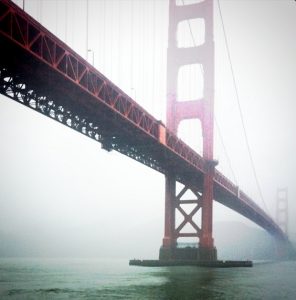
Above image: Ocean Beach SF, 1975, from The Cliff House Project
This course meets the following requirements: Upper Division UD-C: Arts and/or Humanities, SF State Studies: Environmental Sustainability, GE Segment 3.
This class is fully online via Canvas.
Course Description
This course studies the cultural life of the city from its days as a Spanish settlement named Yerba Buena to the present. This particular version of the course treats the historical and cultural life of the city as coextensive with modernity—modern capitalist development, including “progress” and its ideologies. Because the City of SF is bound up with modernity, it is something that is still happening, something that we are all participating in and working through. This is why my versions of the course have been subtitled A History of the Present.
This is a fun class where we learn about all the dirty stories from the 19th century, the gossip, and the unique characters of San Francisco. But we will also think seriously about place and exclusion, the genocide of native peoples, and the history of race in the city. We will also study gender and its constructions, sexuality, nature, commodification, technology, prostitution, trans history, image and spectacle as they relate to everyday life in SF modernities. Significant cultural works, places, and events, will be studied in relation to the material history of the city.
What is San Francisco modernism? The term modernism is defined differently by different people. Since it’s impossible to accurately represent entire periods of human history, for the purposes of this class, when we talk about modernism, we are primarily talking about a concept that seeks to think an entire series of cultural practices, techniques, and relations specific to the 19th century that inform and shed light on how we got to our present moment. Thus, our questions and concerns will be based on contemporary experiences. Our work, in that sense, remains grounded in often urgent problems of the present—for example, race, gender, sex, and class—in relation to their material history. In other words, how modern practices, techniques, relations, and even discourses specific to the 19th and early 20th centuries informs where we are now.
How do we read the unique forms of human expression, such as art, architecture, music, literature, photography, film, and politics associated with this city and their relation to modern life? We will explore these and other questions by tracing our own unique history of the present of San Francisco. Rather than a simple chronological re-telling of dates, facts and major events, we will endeavor to creatively enter into the historical life of the city, thereby changing and expanding our conception of San Francisco. Close attention will be paid to major historical events and cultural locations in the life of the city, such as the gold rush, immigration, ethnicity, race, gender, sexuality, Chinatown, the Chinese Exclusion Act, modernity, world’s fairs, censorship and the beat generation, vice and sin, literature, and photography. By the end of the semester, students should come away from the course with a greater knowledge of the cultural history of San Francisco, and, hopefully, a new experience of the city in relation to its past.
Everyone is welcome in this class. The online forums are, above all, a space where students are allowed to have a voice. It’s really important, especially with what is going on in the world, that we support each other and strive to be respectful of our differences, our contributions, and our points of view. From the subject matter we will study, to many of the primary texts used in the course (written by women and sexual minorities), to the work we will do in the online forums, this is an inclusive class.
This is a ZCCM (Zero Cost Course Materials Class).
Primary Books
Essays and Book Selections
Optional essays:
Study Questions (some course study questions will be included in forums and modules in Canvas).
These are films we will watch online. You will be tested for the content of any of the required films. There will be film notes that you will be required to hand in online.
Films (viewed online, listed alphabetically by director):
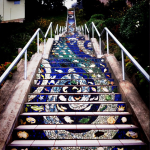
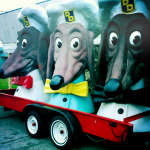
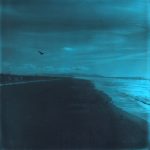

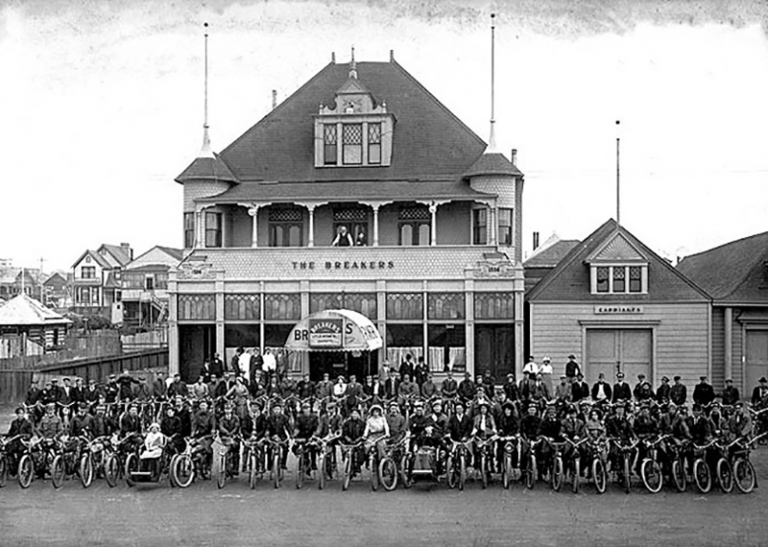
The SF West History Minute is a cool series of one minute West SF history videos. This is a really good jumping off point for further exploration of the Ocean Beach, Sunset/Outer Sunset, Richmond/Outer Richmond neighborhoods. It is produced by the Western Neighborhoods Project. Check out their recent podcast on “Bonet’s Electric Tower” from the Midwinter Fair.

Found SF is one of the single best websites on SF Cultural History. I strongly encourage you to research things of interest to you. This can serve as a jumping off point for your work in the course, even just look around in order to form your own unique relation to this fascinating history. There is a wealth of historical and social information, much of it not available in standard history textbooks at Found SF.
You can search for articles and information you never knew you were missing or needed to know by Decade, Neighborhood / Geography, Population, or Theme.
Just now, in browsing the site to write this, I came across Randy Shaw’s 1996 essay, “Creation of Homelessness”
Have a look at the 1970’s in SF Cultural History:
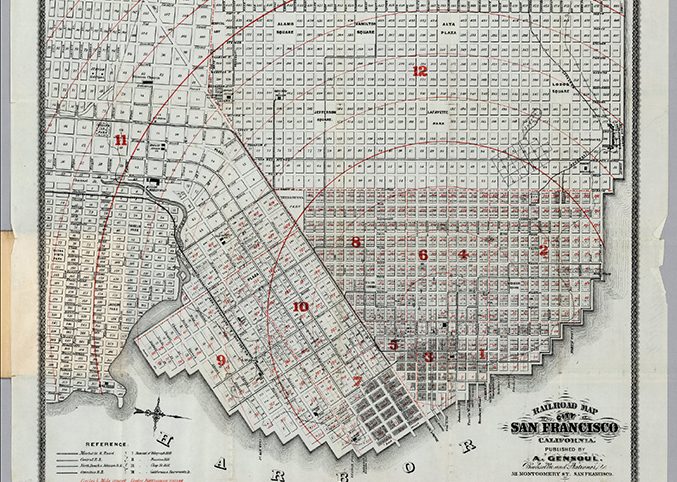
This is a great lecture series on SF Natural History.
“The SFNHS explores all aspects of nature in the Bay Area. We seek to understand our impact on those natural systems, and their impact on us. By understanding the history of the natural world where we live, we seek a deeper connection to that world so that we can make more informed choices for the future.”
I discovered this website while researching the Farallon Island Egg Wars, another colorful chapter in the history of SF. You can find a cool blog with comic illustration by Eva Chrysanthe at:
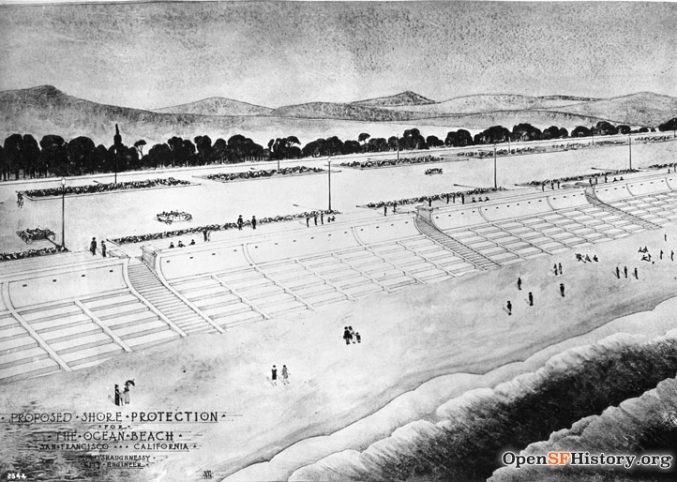
Open SF History: Historical Images of San Francisco is a wonderful collection of images from the history of San Francisco. You can get lost (in a good way) browsing through this incredible collection that largely comes from a an anonymous private collector. The site is maintained by the Western Neighborhoods Project, the same wonderful folks who have given us the SF History Minute and The Outside Lands SF History Podcast.
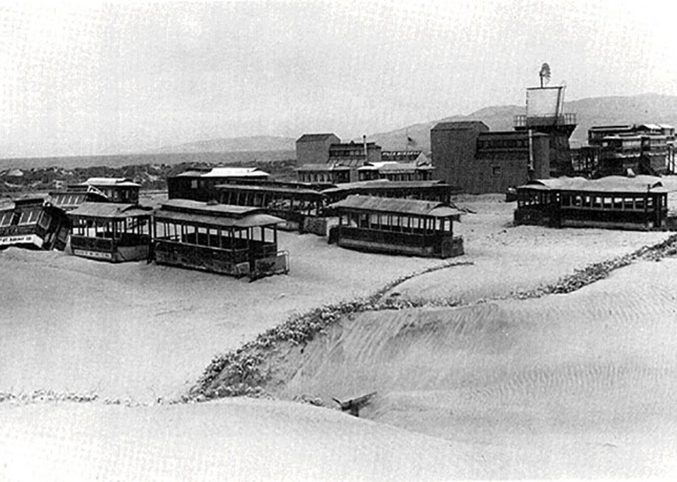
“. . . those moving into Carville were Superior Court clerks, judges, insurance brokers, and newspaper editors. All had the means to own, and did own, conventional, homes. Why were they retreating to the old street cars? One writer explained the appeal as the ‘spice of adventure in appropriating something that is cast away,’ and in turn ‘converting into a thing of beauty what is ranked as worthless rubbish’ —Carville-by-the-Sea: San Francisco’s Streetcar Suburb by Woody La Bounty
Wood La Bounty has some really great images of Carville up on the “Bonus materials” page for his book, Carville-by-the-Sea.
Carville: Suburban Bohemia in Fin de Siecle San Francisco by Natalie Jahraus Cowan
Carville’s Last Remnant by Woody La Bounty
Carville by the Sea: San Francisco’s Streetcar Suburb by Woody La Bounty

Here are some cool links to the then “world’s largest outdoor swimming pool,” which was located across from Ocean Beach near Sloat (where the San Francisco Zoo parking lot currently resides).
Shawn Clover, Inside the Old Fleishhacker Pool House
Shawn Clover, Flickr photo stream of the Old Fleishhacker Pool House.
The Bold Italic, Rare Photos from the Abandoned SF Pool House
Woody La Bounty, “The Fleishhacker Pool”
FoundSF, The Fleishhacker Pool, 1925-1984
Peter Heartlaub, “Saying Goodbye to the Fleishhacker Pool House”
There are some great photos of the pool after it was abandoned and before it was paved over for the zoo parking lot at Abandoned Things: Fleishhacker Pool by Dory Adams, photos by Kevin Scanlon.
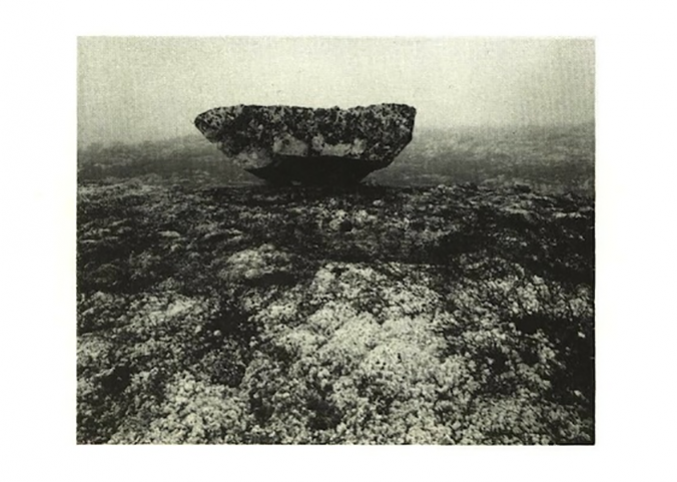
San Francisco and the Bay Area has a rich tradition of what was once called new music or avant-garde composers, among them major figures like John Adams. I have always loved Ingram Marshal’s “Fog Tropes” (1981).
“Fog Tropes began life as a series of field recordings of foghorns around the San Francisco Bay, made in 1979 for performance artist Grace Ferguson. These were then manipulated, added to, and expanded for performance with a brass section, which acts in sonorous call and answer with its industrial counterpart. In the record’s original sleeve notes, Marshall recalls: “A lot of people are reminded of San Francisco when they hear this piece, but not I. To me it is just about fog, and being lost in the fog. The brass players should sound as if they were off in a raft floating in the middle of a mist-enshrouded bay.” The tone is sombre, the rhythm tidal, the sound world an affecting piece of tape collage and modern/minimal composition, with echoing brass, gulls and sirens in the mist.” from Arc Light Editions.
The piece definitely evokes living in the Outer Sunset / Ocean Beach Neighborhood.

Here are some cool and interesting additional books that I often teach in this course.
Erik Lyle’s On the Lower Frequencies: A Secret History of the City
Herbert Asbury’s The Barbary Coast
Brook, Carlsson, and Peters, Reclaiming San Francisco
Bourgois and Schonberg, Righteous Dopefiend
Anice Jacoby, Editor, Street Art San Francisco: Mission Muralismo
Additionally, there is a volume, Streetopia, that I am looking forward to checking out.
Additional works on SF cultural history include David Talbot’s Season of the Witch, Josh Sides Erotic City: Sexual Revolutions and the Making of Modern San Francisco.
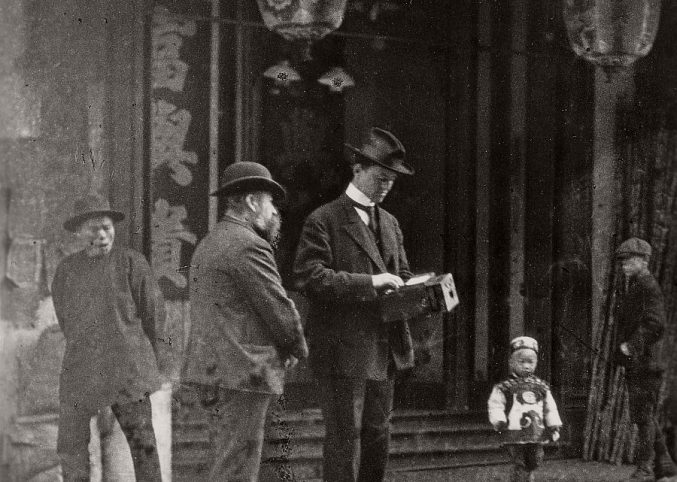
Arnold Genthe (1869 – 1942) was a photographer who documented the pre-1906 Chinatown. Genthe retouched some of his original photographs, removing English language signs, non-Chinese people, evidence of Western technology, etc, and specifically shot them, arranged, or cropped them in order to romanticize the “exotic” nature of his subject(s). Thus, the images show us, in addition to few surviving images of Old Chinatown, Genthe’s own “gaze” (a peculiarly Western and Orientalist gaze) and the spectacle of Orientalism at the turn of the century. There are several books on the subject, including a critical treatment in Picturing Chinatown: Art and Orientalism in San Francisco by Anthony W. Lee. Also available is a collection of Genthe’s work, with a critical essay by John Kuo Wei Tchen, Genthe’s Photographs of San Francisco’s Old Chinatown.
The Library of Congress has an archive that compares Genthe’s negatives with some of his finished photographs.
The California Historical Society maintains a website with many of Genthe’s images of old Chinatown,
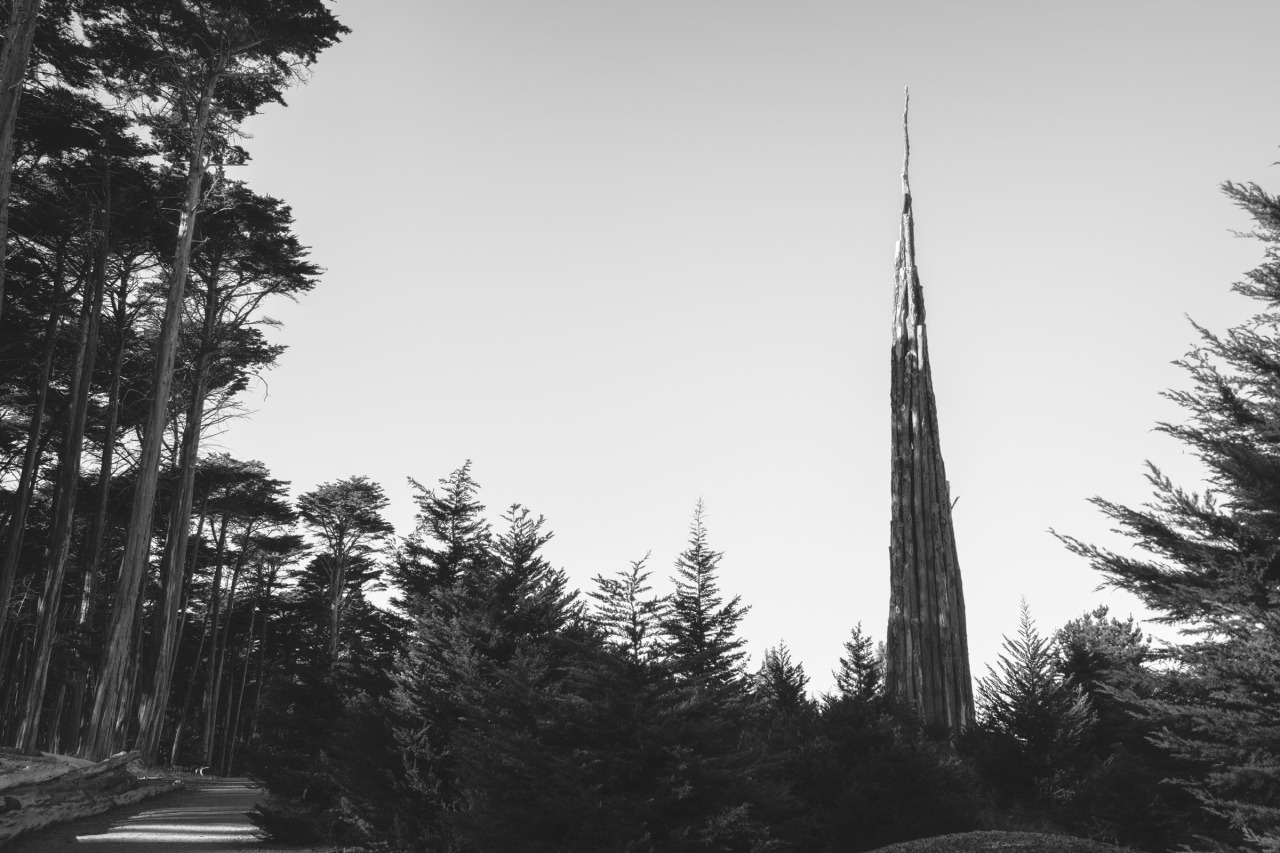
“Spire” is a Presidio Site-Specific Installation by Andy Goldsworthy.
“In 2008 the FOR-SITE Foundation, in partnership with the Presidio Trust, commissioned the Spire, a site-specific installation by artist Andy Goldsworthy. The Spire is made from the trunks of thirty-seven cypress trees felled as part of the Presidio’s reforestation effort. From its fifteen-foot diameter, it rises over ninety feet into the air.
From the For-Site Foundation website. You can explore their website for info on the site-specific art installation project, “Presidio Habitats.”
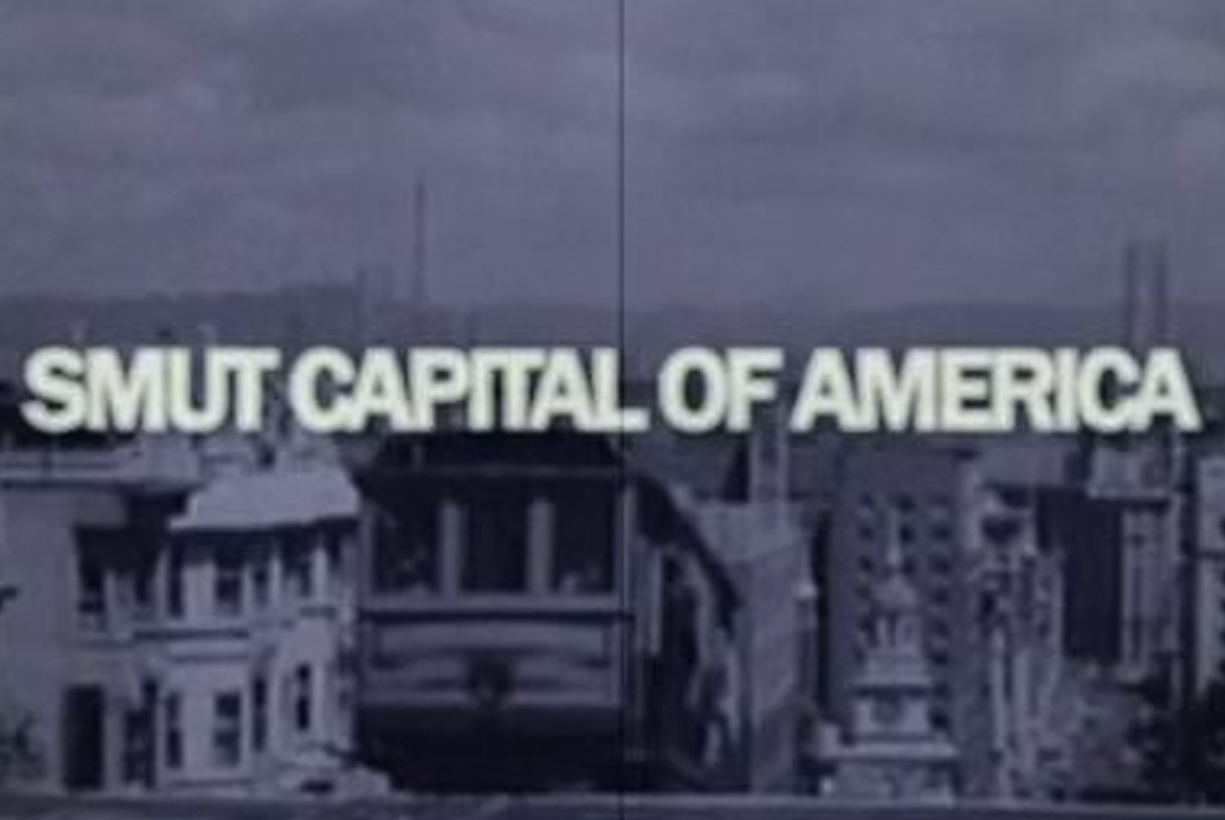
A short film on SF and porn by Mike Stabile.
“Smut Capital of America … chronicles San Francisco’s reign as the center of porn production in the U.S. during the early 70s. In 1969, San Francisco became the first city in the U.S. to effectively legalize pornography, hugely boosting our reputation as a boomtown for sex, and eventually opening up the floodgates to the rest of the country”
Link to YBCA’s program http://www.ybca.org/smut-capital-america
The amazing Sex Ed poster is by Jayde Cardinalli: http://thebolditalic.bigcartel.com/product/the-smut-history-of-san-francisco
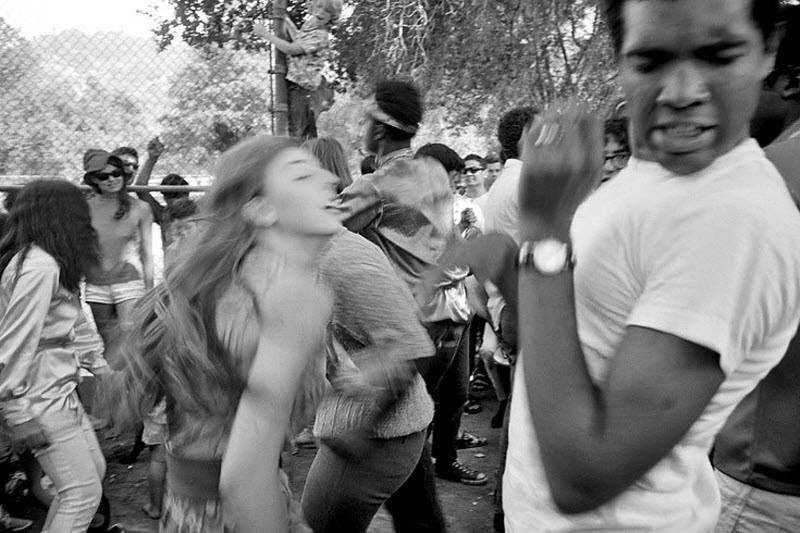
The Hippie Temptation is a sensationalistic account of the Haight/Ashbury scene circa 1967 from CBS News. This version may be missing it, but in the original, at the opening, Harry Reasoner asks, with a detectable snear, “What are hippies?” I love this documentary because it shows a few critical things: 1) that many of the things we associate with May ’68 were preceded by events in 1967 (particularly around creating institutions and arrangements at a local level) 2) the ways “hippies” were turned into objects of hate by the mainstream media. 3) It’s fascinating the way Harold was treated by his mother because he said, based on his experiences with acid, that God is everything that exists. Amazing! SFSU owns this film on 16mm!
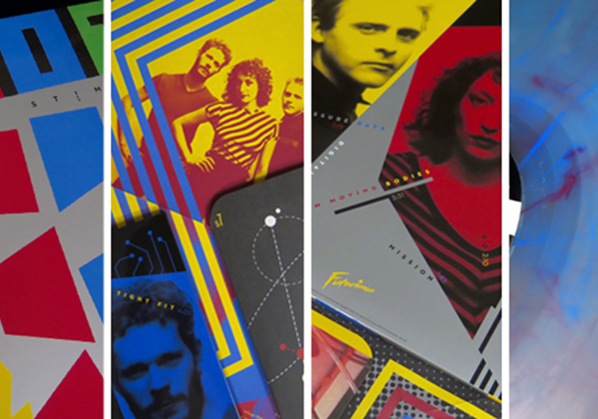
“After hearing the Headman remix of a song called ‘High Pressure Days’ on Relish records, I was stunned to find out about this amazing group called The Units who were operational between 1977 and the mid 80s. On listening to an anthology called History Of The Units (which gets a UK release via Community Library this week) I wanted to learn more about them.
What I found was a situationist group with an anti-fashion, pro-art manifesto who used to smash up fake guitars every night, make their own films, share stages with the Dead Kennedys and draw as much from punk as they did from their local gay disco scene” — from “The Units — High Pressure Days in San Francisco” by John Doran at “The Quietus.”
The video links below will open in a pop-up so you don’t have to leave the page.
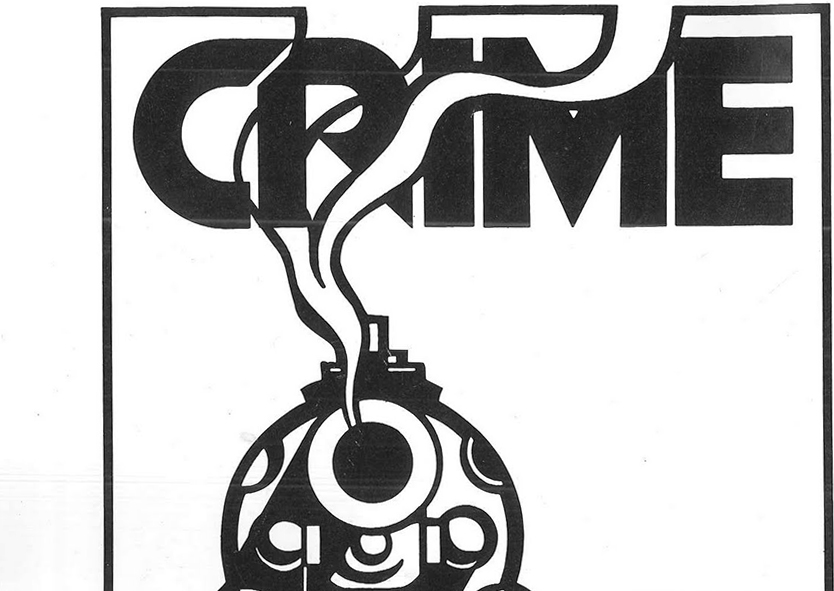
“Go all the way back to the beginning of punk, before it was even called ‘punk,’ before Sid Vicious was a Sex Pistol, back in the original time of those punk godfathers the New York Dolls, and you will discover a band called CRIME that formed in San Francisco. Most credit this band with recording the first West Coast punk record in 1976. Many contemporaries also credit the four members of CRIME with being total assholes. CRIME hated hippies, refused to open for other local bands, dressed in police uniforms, put dictators on its band posters, and disdained politics at the time it became a standard theme in punk. The band also helped define the early S.F. scene with shows at now-defunct venues like the Old Waldorf and the Mabuhay Gardens”—from “The Entire Oral History of S.F. Punk Pioneers CRIME …” by Ian S. Port.
Murder by Guitar: San Francisco Punk Band CRIME Live at San Quentin Prison, 1978 from Dangerous Minds.
An Oral History of Crime from Collapse Board.
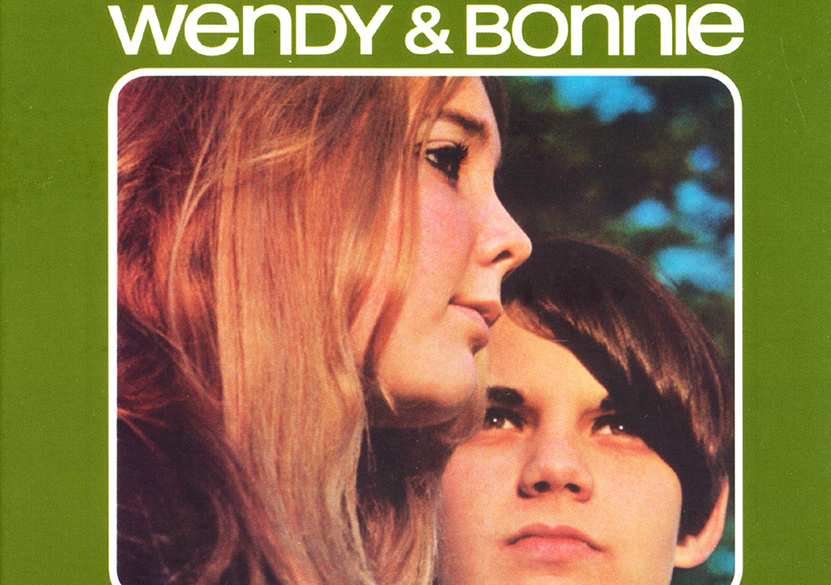
“Genesis” by Wendy and Bonnie is one of my favorite psychedelic children’s records ever made!
“Genesis, released in 1969, was the one and only album from sisters Wendy and Bonnie Flower. The San Francisco-based siblings were 18 and 15 at the time the album was originally released, and the music of Genesis belies their tender ages. The songs on Genesisare light psychedelic folk, reminiscent of artists like The Free Design, Tim Buckley, and, to a certain degree, fellow Californians, The Mamas and the Papas. The sisters’ harmonies are the main draw, floating into the ether above the airy soundscapes. While songs like “Let Yourself Go Another Time” and “The Winter Is Cold” are upbeat and jaunty, most of Genesis is restrained beauty.”— from “Genesis and Beyond” by Frank Valish
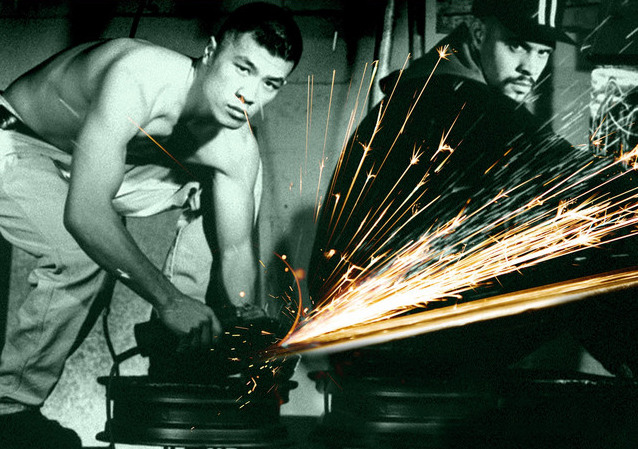
The Disposable Heroes of Hiphopcrisy were an important SF band founded by Michael Franti and Rono Tse. The band came out of their earlier collaboration, The Beatnigs, which were released on Jello Biafra’s label, Alternative Tentacles. Ironically, after re-releasing the song as the Disposable Heroes, “Television” became a minor hit on MTV.

CCSF houses one of Diego Rivera’s most famous murals, “The Pan-American Unity Mural,” which Rivera painted while in residence during the 1939 World’s Fair on Treasure Island. The mural is set to be exhibited in a museum for the very first time in 2020 at SFMOMA. CCSF maintains a great page about the mural, its importance and the meaning of the various panels. The site contains an overview of the mural, as well as analyses of key sections, including the various uses of symbolism, and historical figures, depicted in the mural. It is a major work (I have a poster reproduction in my office, as we as a fold out guide to the mural—which is the same information that is available online at the link above).

Storied: San Francisco is “a podcast about people. Artists, bartenders, doctors, lawyers, business owners … they all have one thing in common—San Francisco is a place they live in, work in, or do their thing in. This project is a collection of stories about life in San Francisco and the Bay Area. The goal is to further enrich the experience of being here by learning about the many people who’ve come before us, and those who continue to add to the feeling that this place is special. It’s also to get to know your neighbors through hearing their stories. And we hope that you’ll be inspired to share your own stories.” From StoriedSF.com.

Film Noirs Shot in San Francisco Note that many of the most classic films (e.g. Out of the Past, Dark Passage) are owned by corporations
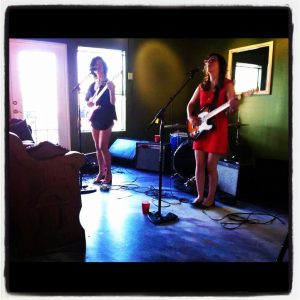
Share on facebook Facebook Share on twitter Twitter The past decade has been be a productive one for independent music in San Francisco. There are
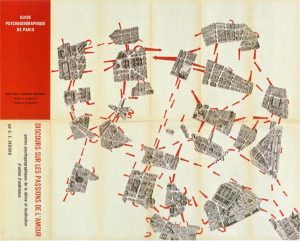
dérive A mode of experimental behavior linked to the conditions of urban society: a technique of rapid passage through varied ambiences. The term also designates
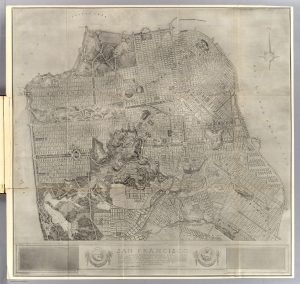
Commissioned by the Association for the Adornment of San Francisco in 1904, D.H. Burnham’s Plan for San Francisco (1905) sought to modify SF’s grid-system with
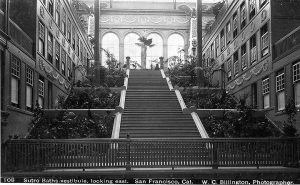
The Sutro Baths, now a modern ruin, were a quintessential Victorian site of amusement, education, health, and leisure. It seems difficult to imagine the scope of